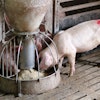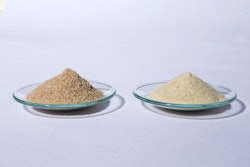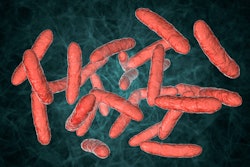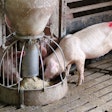
Pigs fed a yeast alternative post-weaning performed as well as those fed high doses of zinc
Certain yeast products may be able to replace the growth-promoting action of zinc and antibiotics in pig diets, according to a feeding trial out of the University of Guelph.
Pigs may experience reduced growth or weight loss in the weeks immediately after weaning due to stress, decreased feed intake, diarrhea and infection. To counter this without the use of growth-promoting antibiotics, producers have turned to high dosages of zinc, which also has antibacterial properties.
But as with antibiotics, bacteria can develop a resistance to zinc over time, and a growing concern about excess zinc polluting the environment has led several jurisdictions to ban the use of zinc in animal diets alongside antibiotics, according to Elijah Kiarie, an assistant professor of monogastric nutrition at the University of Guelph and one of the authors on the study. With the European Union set to limit the use of of zinc beginning in June 2022, Kiarie said the University of Guelph research team wanted to explore the capabilities of another alternative: yeast.
In the study, pigs received one of four diets: one including .5% enzymatically treated yeast, another formulated with zinc, a third including zinc and yeast, and a control diet without either additive. Pigs fed zinc and/or yeast grew faster than pigs on the control diet regardless of which combination of additives they received, indicating that yeast may be a suitable replacement for zinc in post-weaning diets, although the two additives appear to work differently, Kiarie said.
Zinc, in keeping with the nutrient’s properties, changed the ratio of healthy lactic acid bacteria to E. coli detected in the gut of the pigs studied. Yeast, on the other hand, did not impact the gut’s bacterial population but rather seemed to make growth more efficient by protecting against the loss of cells in the digestive tract.
“The gut loses a lot of cells and when it does the cells have to be replaced, and replacement is very expensive,” Kiarie said. “For some reason, the yeast is able to preserve the cells.”
The yeast also seemed to strengthen the pigs’ immune system, Kiarie said.
While there is enough evidence from the trial that pig producers might consider exchanging a portion of the zinc in their formulations for enzymatically treated yeast, Kiarie said there is still work to be done to determine the broader feasibility of yeast as a growth-promoting feed additive. The University of Guelph trial used relatively large doses of yeast, he said, which could prove costly in a production setting. But the larger doses may not be necessary to get the desired results — a follow-up to the trial used half as much yeast and still yielded improved growth. Because yeast is 40% protein, there is also a need for further research to determine how the diet should be adjusted when it is included.
















